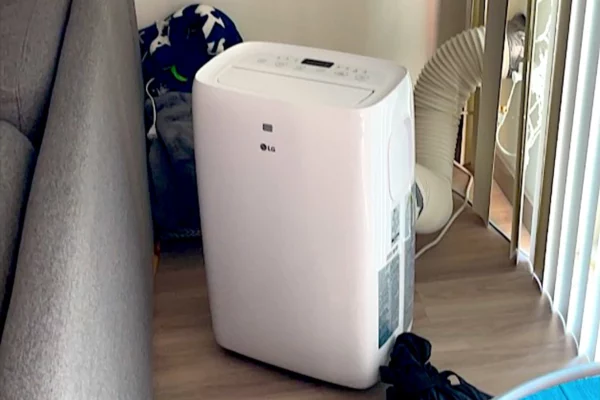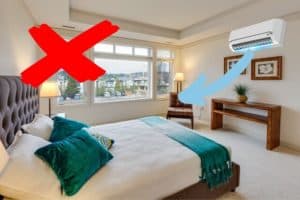10 Important Things to Know Before Buying Air Conditioner
There are many things to know before buying an air conditioner but what are the important things that make a difference?
Buying air conditioners sometimes can be intimidating especially when there are so many brands, models, and types to choose from. The brochures are full of fancy features that might confuse you. You may be wondering which model you should choose.
Hence, in this article, I listed down the 10 important things that you can focus on before you go shopping for air conditioners.
1. Don’t Fully Rely on the Seller
Many people rely on the seller to advise them which air conditioner they should buy. People usually think that the seller is more likely to be correct. However, that is not always the case.
The reality is, you are better at knowing how you’ll be using the air conditioner than anyone else. Thus, you should be discussing with the seller which air conditioners suit you the best rather than letting the seller decides for you entirely. One of the important lessons I learn from my experience is to never fully rely on the salesman because there is a great chance that they are wrong.
2. Ask the Correct Questions
We always ask a lot of questions when buying air conditioners but did we asked the correct questions? Below are a few good questions that you can ask the seller when buying air conditioners:
- How do you calculate the required capacity for my room?
- Can I use one bigger size air conditioner instead of two or three?
- How to service this type of air conditioner and what is the expected cost per service?
- What is the total cost of installing this type of air conditioner?
- What are the things that I should be careful of during the installation of this type of air conditioner?
- If my air conditioner malfunction, who should I call?
- How is the warranty?
Asking the above questions gives you much more information, not just on the air conditioner itself but also the upcoming installation and future maintenance. You’ll understand the whole picture of owning the air conditioner and it helps you make a better decision.
3. Understand the Terms Used
It is very important to know what is meaning of the terms written on the air conditioner brochure. Some of the basic terms are:
- Btu/hr stands for British Thermal Unit per Hour. It is the cooling capacity of the air conditioner.
- Horsepower is more commonly used to refer to the cooling capacity of the air conditioner. One horsepower is about 10,000 btu/hr.
- Energy Rating is the energy efficiency rating (1 to 5-star in Malaysia). The higher the star rating, the lower the electricity consumption.
- dB(A) is the noise generated from the air conditioner unit. The lower the quieter.
- Inverter is a device that enables the air conditioner to regulate its capacity instead of stop and start.
By understanding the terms, you can have better communication with the seller and know exactly what you are getting.
4. Use Rule of Thumb to Estimate Capacity
For a 200 or 300sqft room, most of us kind of know that it requires 1HP or 1.5HP based on experience. But, for a larger area such as the living room, sometimes the estimation can be way off.
Generally, I use a rule of thumb of between 30 to 60 btu/hr per sqft. If my room is shaded, has curtains, then I’ll go for 30 btu/hr per sqft. If my room has full height windows and I don’t want to close the curtains, then I’ll probably use 40 to 50 btu/hr per sqft. If I’m sizing for my living room where occasionally there will be many people and doors are frequently open, then I most likely will use 60 btu/hr per sqft and above to check my required capacity.
Using the rule of thumb, you can always check if the seller is suggesting you the optimal size and not oversizing it. Incorrect air conditioner size is very troublesome later on.
5. Differences in the Air Conditioning System
Most of the time, the more information we have, the better we are at making a decision. Thus, knowing the common air conditioning system in the market allow you to have an idea of which system may be more suitable for you.
Single Split Air Conditioner
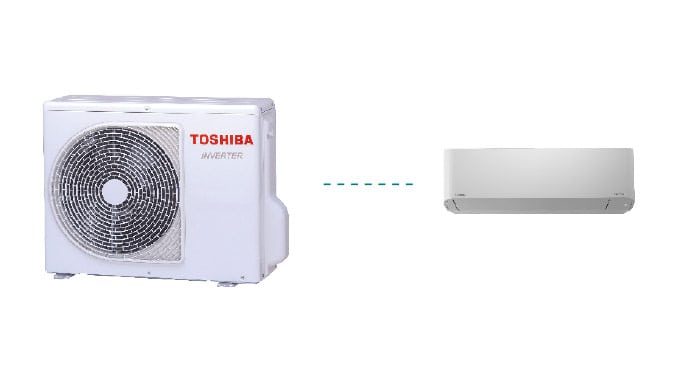
The single split air conditioning system is the most common type people have in their house, at least here in Malaysia. It is a very straight-forward kind of system; simple. The indoor unit and the outdoor unit are typically installed back-to-back with a very short length of refrigerant pipe. The installation is quick and easy, involving only minimal drilling work. It can be an inverter or non-inverter type.
Pros
- Cheaper to buy and install
- Reliable; not centralized
- Easy maintenance
Cons
- Limited capacity and thus, required many units
- House not nice looking due to multiple outdoor units hanging around
- Service cost can be high if there are many units
Multi-Split System (Centralized)

The multi-split air conditioning system is similar to the single split system but with only one outdoor unit. Typically, one multi-split outdoor unit can connect up to 5 indoor units. It requires 5 refrigerant pipelines between the multi-split outdoor unit there are 5 indoor units. The multi-split system is less commonly used than the single split system because it is designed for a narrow application.
Pros
- Space-saving; one outdoor unit instead of five
- Easy maintenance
- Many types of indoor units to choose from
Cons
- Installation is more expensive
- Has many long refrigerant gas pipe and thus, more expensive to repair if there is a leaking
- The part replacement may take longer due to no ready stock
VRF System (Centralized)

The VRF or variable refrigerant flow air conditioning system is different from either the single split or the multi-split system. The VRF outdoor unit is capable of connecting up to a whopping 64 indoor units. It is commonly used in office buildings but it also applicable for large houses. A well-designed VRF system can provide a quick return on investment and long-term energy saving. Buying the VRF system is complicated right at the beginning from model selection to installation and operation.
Pros
- Excellent energy efficiency
- Space-saving; one giant outdoor set serving 64 outdoor units
- High tech; centralized control
Cons
- Very expensive to buy, install, and repair
- Required extensive hacking, drilling, ceiling work due to the long refrigerant gas pipes
- If the outdoor control board is faulty, all air conditioners will stop working
6. Types of Air Conditioner Indoor Unit
There are many types of indoor units you can choose to mix and match for your house. For a smaller house, people usually go for the typical wall-mounted type. Some medium to large house owners likes to blend their interior with the ceiling cassette and ducted type air conditioners.
Wall-Mounted Air Conditioner
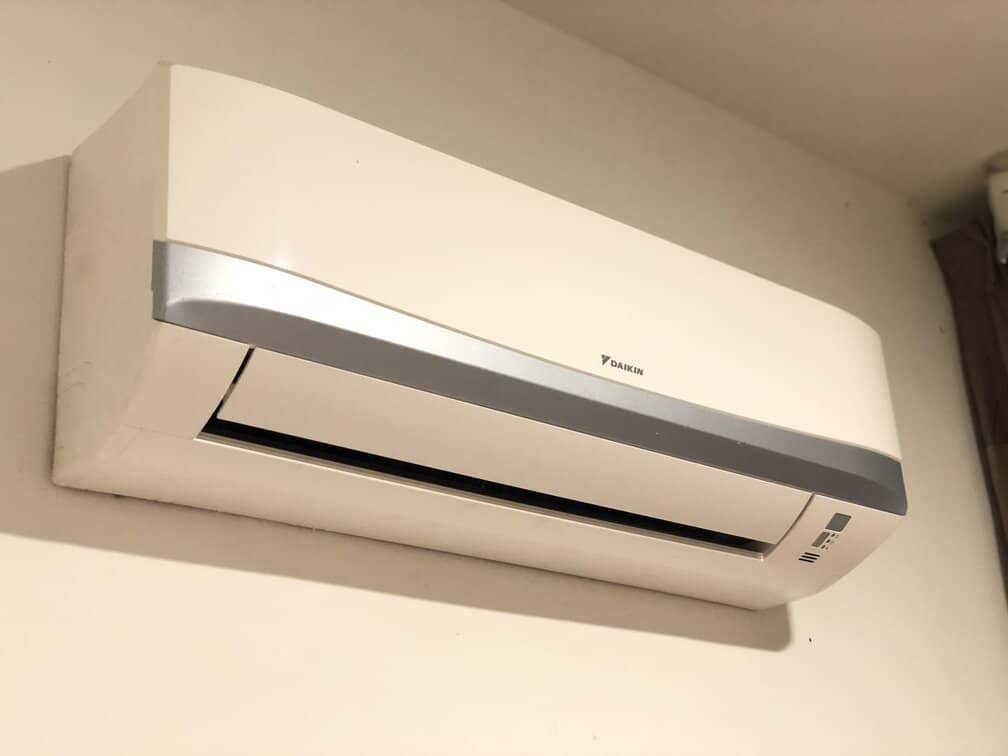
The most common type of air conditioner indoor unit must be the wall-mounted type. It can be seen in nearly all houses. The wall-mounted type often blends well with the house interior.
Pros
- Beautiful and elegant looking
- Simple and easy to install
- Easy to clean
Cons
- Airflow is one direction only
- Cheaper models may not look so nice
Ceiling Cassette
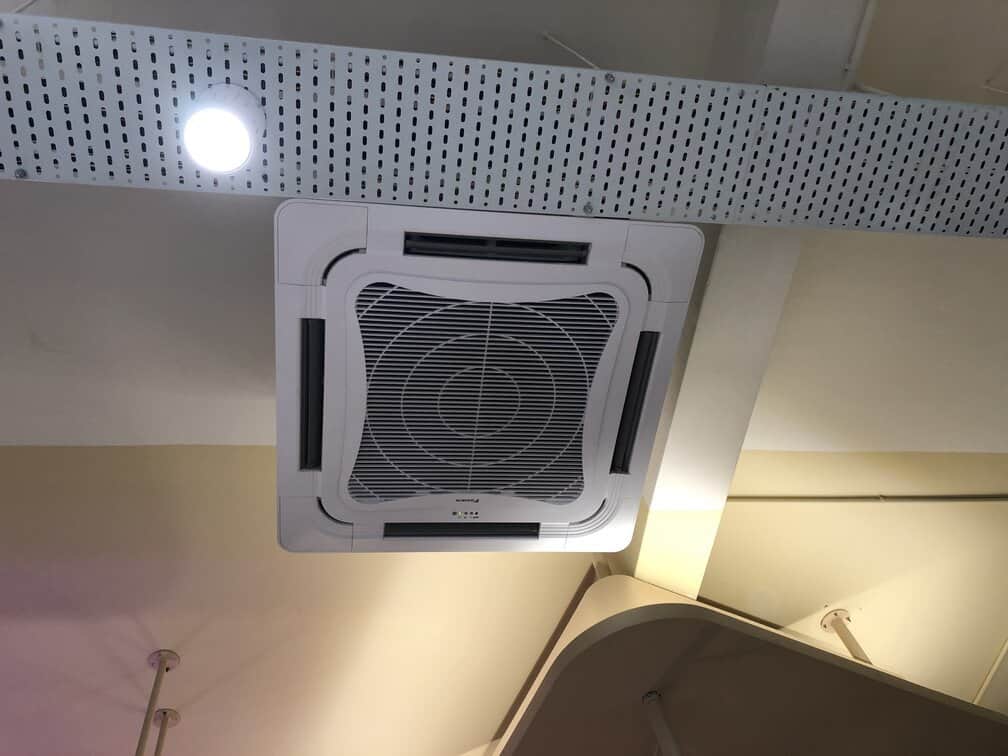
The ceiling cassette type is more commonly installed in the living room. It is often installed above the ceiling and gives a very clean look to the entire ceiling.
Pros
- Good air distribution; airflow is all directions
- Easy to clean
- One unit capacity is up to 5HP
Cons
- More expensive to install and service
- A ceiling manhole is required
Ceiling Exposed

Ceiling exposed type is not common for home use. It is more commonly used for commercial places such as offices and restaurants.
Pros
- Flat design is suitable for low ceiling height
- One unit capacity is up to 5HP
Cons
- A larger capacity unit can be noisy
- Airflow is one direction only
Ceiling Concealed / Ducted
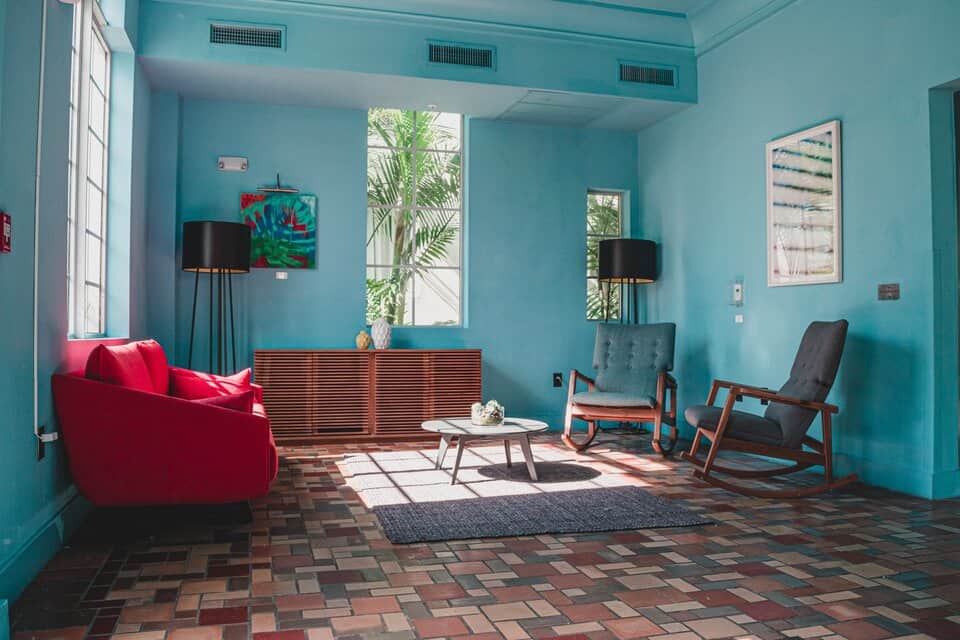
Some large house owners choose to install the ceiling concealed / ducted unit in their living room because it provides the best aesthetic looking especially with linear diffusers.
Pros
- Aesthetic interior
- Excellent air distribution
- Very quiet
Cons
- Very expensive and complicated
- Difficult to do service and maintenance
7. Features of Air Conditioner
Nowadays, there are so many brands with so many different models and each model offers so many different features. Sometimes, it can be confusing especially with all the fancy words used. Getting to know the basics will give you a head start before you go on shopping.
- 3D Airflow / 4D Airflow / Aerowings / S-winged – basically are referring to airflow control where they provide better air distribution.
- Smart EcoMax / iSenz / I-SEE / I Feel / Air Sleep – utilizes sensors such as motion detectors and infrared to enhance comfortable or improve energy-saving or both.
- Plasma / Ionizer / PLUSMA / nanoe / negative ion / Green Tea Filter / WASABI Filter(?) – more or less referring to provide better air quality by reducing odor and filtering finer dust.
- ECO / 5-star / Energy Saving / Algorithm Control / PID Inverter – essentially are inverter type air conditioner. Non-inverter is usually not more than 3-star.
- Smart Control / APP Control / Wifi Control – connect your mobile with the air conditioner to do basic functions such as on/off, temperature control, and scheduling.
As you might have noticed, most of the words used are referring to similar things. Now, as you know more about the feature, you can narrow down your choice into those that fit your needs.
8. Air Cooler is NOT SAME as the Air Conditioner
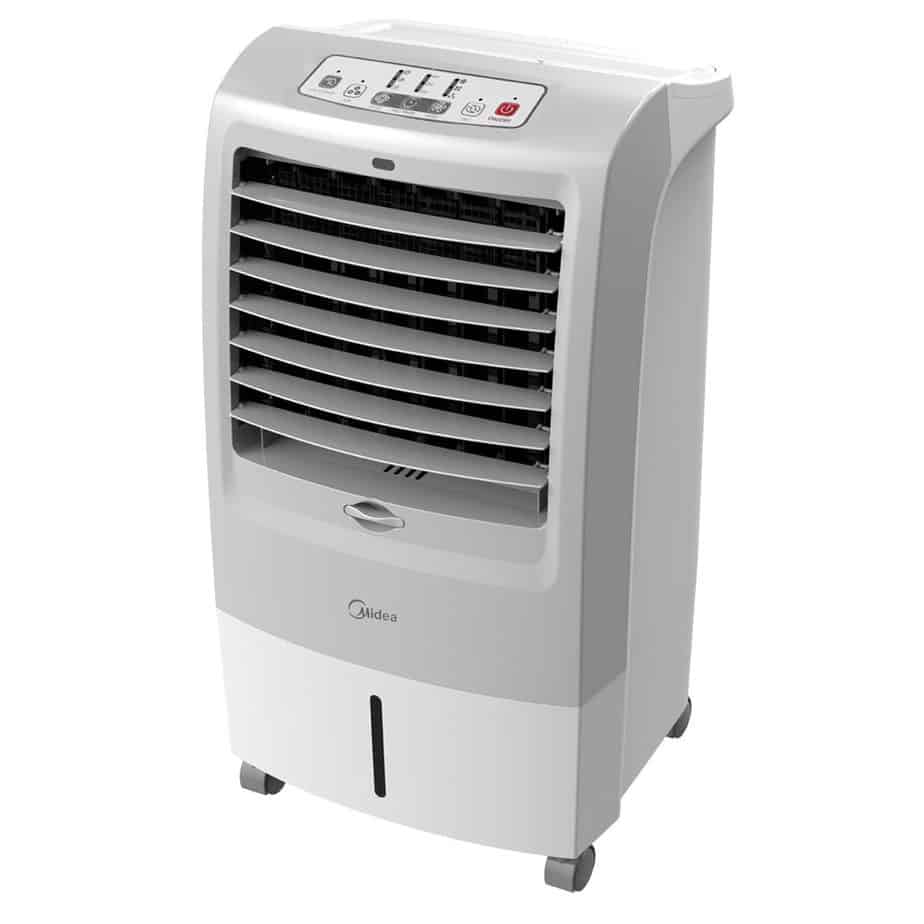
A typical air cooler is the one that we need to constantly fill in water or else, it losses its cooling effect. This type of cooling is very different from the air conditioner. Air cooler, over time, gives a very humid environment where your skin will feel very sticky because they lack the dehumidify function. Instead, air cooler adds more humidity or moisture into the air and that is why we need to constantly fill up the water.
The comfort the air cooler provides is incomparable with the air conditioner. The air conditioner is designed to not just lower the surrounding air temperature, but also dehumidify or reduce moisture to about RH 40 to 50% where humans generally feel comfortable.
Nevertheless, some floor standing air conditioners look very similar to the air cooler. The best way to distinguish them is to check if there is any hot air discharge needed because if it is an air conditioner, it must discharge hot air to the outside.
9. Price of the Air Conditioner
In Malaysia, most of the brands, more or less, have the price ranging from RM1,300 to RM1,400 for a standard model 1HP wall-mounted inverter air conditioner. The non-inverter type usually about RM200 cheaper. A premium model can go up to RM1,800 or more, even with just 1HP. The premium model usually is more beautiful looking and packed with lots of features.
The price of the air conditioner across various brands can be easily found on e-commerce websites such as Lazada. Some online purchases even offer installation altogether. The typical price of installation for a 1HP wall-mounted air conditioner is about RM250 inclusive of about 10 ft of copper pipe and cable.
The higher the air conditioner capacity, the higher the purchase price and also the installation price. Also, more complex indoor units such as the ceiling cassette and ceiling exposed unit typically more expensive than the wall-mounted unit in both purchase and installation price.
As for the service price such as chemical wash, often the more units you have the more expensive it’ll be, not so much on the capacity and types of the indoor unit. For instance, servicing a 1HP wall-mounted is the same price (around RM130) as a 1.5HP wall-mounted unit because the size of the air conditioner is almost the same or sometimes, the same. The ceiling cassette type will be more expensive to service, then the ceiling exposed and ducted, and so on. Generally, the harder it is to service, the more expensive it is.
10. Choose a Reputable Brand
The air conditioning industry has come a long way, most of the brands are competing based on the budget for marketing. In terms of performance and reliability, most of them are equally good and some are just slightly lacking.
If I would to choose, I’ll go for the most popular brand in my area. For example, in Malaysia, I think Daikin and Panasonic are the top two popular brands. By choosing the popular brands, you can easily buy, install and service your air conditioners as there are more retail stores, more installers, and more technicians who know how to check and repair your air conditioners. Most importantly, popular brands typically have ready stock on their common parts which you can replace very quickly in case of a breakdown.
Conclusion
Buying air conditioners, to some people, is a big purchase consider when 4 or 5 units are needed. Therefore, it is worth taking some of our time to gather information before buying so that we have a great chance of selecting the best air conditioners.
It is not hard to choose the model by yourself. You know how you’ll use the air conditioner better than anyone else. So, don’t be afraid to make the decision.
Looking forward to your confidence in the upcoming purchase. Enjoy your new air conditioners!
If you have anything to add (or ask) about this topic, leave a comment down below!



